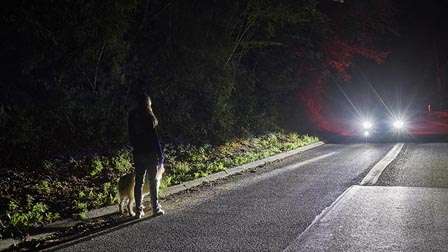Researchers at Ford Motor Company are working to advance the lighting technologies of its vehicles by incorporating regular cameras as well as infrared cameras to detect cyclists, animals, and pedestrians on or near the roadway, and to determine if the car is getting close to an intersection or roundabout.
The goal behind adding this new technology is to make night-time driving safer.

Per a litany of road safety reports, driving on unlit roads significantly increases the likelihood of accidents.
“Many people who drive at night have had to quickly react to someone or something suddenly appearing in the road – as if from nowhere,” said Ken Washington, vice president, Ford Research and Advanced Engineering.
To circumvent this issue, Ford is working on two new advancements: a camera-based advanced front lighting system, and spot lighting.
Speaking to the former, this technology is already developed, having been built at Ford’s European Research and Innovation Center in Aachen, Germany. The system is able to widen its light beam at junctions and roundabouts, so as to provide the driver with a clearer view of the upcoming change in traffic pattern, as well as an improved ability to check and see if there are cyclists or pedestrians crossing the road.
Additionally, the system uses GPS information to illuminate bends and dips on the road.
“Where GPS information is not available, a video camera detects lane markings and predicts the road's curvature. When next the driver uses the same road again, the headlights adapt to the course of the road automatically,” explained the company, which added that it expects the technology to be available for customers in the near future.
Spot Lighting, the other piece of new lighting technology the company is working on, is still in the pre-development stage. The plan is to use an infrared camera in the front grill to locate and track people and animals at a distance of 120 meters (approx. 400 feet). When a hazard is located by the system, it notifies the driver with a spot and a stripe on the road surface on the screen inside the car. In terms of making it noticeable to the driver, hazardous objects are marked with red or yellow coloring, which varies according to the proximity of the object and level of danger.
Check out the two technologies in Ford’s video below:
Via Phys.org
Advertisement
Learn more about Ford Motor Co.





